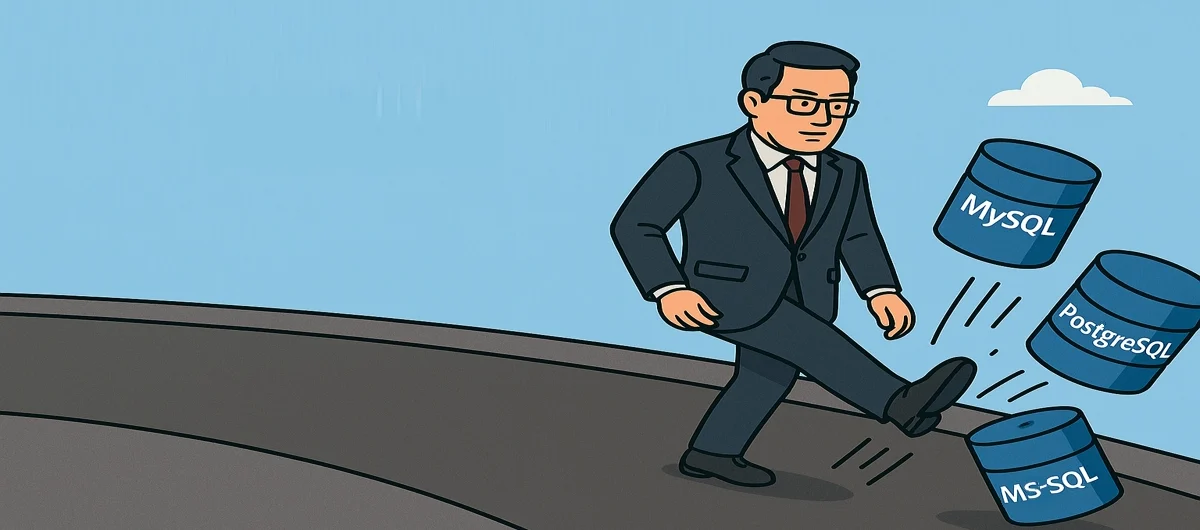In today’s enterprise IT landscape, databases have evolved from backend repositories to the very foundation of digital business. They underpin applications, support real-time decision-making, and house the most critical data assets. Yet, despite massive investment in application DevOps, many organizations continue to manage their database changes in isolation—manually, inconsistently, and with minimal governance.
ignoring database DevOps isn’t just a missed opportunity—it’s an accumulating liability. The cost of doing nothing isn’t always visible on a balance sheet, but it materializes through operational inefficiencies, missed release targets, security gaps, and the erosion of confidence across delivery teams.
The Inaction Tax
Every time a developer manually applies a schema change to production without tracking, approval, or rollback procedures, the organization assumes risk. Not just the risk of failure, but the risk of not knowing what changed, who changed it, or how to undo it when something breaks. This lack of traceability leads to slow root cause analysis, misaligned teams, and reactive firefighting.
The cost here isn’t measured in currency alone—it’s measured in momentum. When deployment pipelines are halted to investigate failed scripts or unexpected data loss, it impacts everyone: developers, testers, release managers, compliance officers. Downtime might be short-lived, but the ripple effect delays business outcomes.
Worse still is the loss of predictability. When you can’t trust your environments to behave the same way, or rely on reproducibility from test to production, you’re left flying blind. This lack of confidence forces teams to over-engineer safeguards, duplicate environments, or run extensive manual validations—a drain on focus and creativity.
Invisible Waste
One of the most dangerous aspects of database operations without DevOps practices is how normalized the inefficiency becomes. Teams accept long change approval cycles, manual script review boards, and ambiguous responsibilities as “just the way it is.” But under the surface, valuable engineering hours are being diverted to low-value activities: revalidating changes, fixing promotion errors, or waiting for access permissions.
These distractions degrade productivity. Developers are pulled away from delivering business features to babysit deployments or patch rollbacks. QA teams chase phantom bugs that stem from environment drift rather than application logic. Release managers negotiate across disconnected systems, often relying on spreadsheets to track change readiness.
None of this feels urgent until there’s an incident. Then, suddenly, leadership wants to know why rollback isn’t instant, why audit logs are incomplete, or why the last change wasn’t reviewed. In that moment, the cost of doing nothing becomes painfully clear.

Fragmentation and Shadow Ops
Without a standardized database DevOps framework, teams tend to create their own workarounds. Some keep change scripts in local folders; others use makeshift version control or undocumented shell scripts. This fragmentation leads to tool sprawl, inconsistent practices, and unintentional policy violations.
Shadow operations increase audit complexity and undermine collaboration. When one team handles changes differently than another, coordination across geographies or squads becomes harder. Even worse, well-meaning engineers may bypass governance controls to “unblock” progress, inadvertently opening up security vulnerabilities or compliance gaps.
From a CIO perspective, this represents a breakdown in enterprise architecture. Instead of a unified delivery pipeline, the organization has a patchwork of manual checkpoints and tribal knowledge. That makes scaling, onboarding, and even external certification audits more difficult and costly.
Slower Time to Market
In the world of digital products and competitive feature releases, delay is its own form of cost. When database changes are not integrated into CI/CD pipelines, release candidates stall. Manual approvals, untested dependencies, and non-reproducible environments slow down iteration speed.
This results in misalignment between development and business objectives. Features are ready, but the database changes lag behind. Teams wait on DBAs, DBAs wait on scripts, and customers wait for value. It may not be classified as downtime, but it’s certainly lost momentum.
In a product-led organization, such latency isn’t just a technical issue—it’s a strategic bottleneck. Over time, it erodes competitive differentiation and frustrates stakeholders.
Compromised Security and Compliance
Security isn’t just about encryption or firewalls. It’s about knowing what’s changing, where, and by whom. When database changes are applied outside a controlled, auditable pipeline, even minor oversights can lead to major exposure.
From a governance standpoint, the lack of visibility into change history undermines compliance with internal policies and external regulations. During audits, this translates to last-minute scrambles to reconstruct change activity. In highly regulated industries, this can put certifications at risk.
Moreover, inconsistent deployment practices increase the likelihood of human error. Accidentally dropping a table, misconfiguring a permission, or applying test logic to production isn’t just inconvenient—it can be catastrophic. And the more environments, teams, or geographic regions you have, the higher the risk surface.

Opportunity Cost and Innovation Fatigue
When engineering energy is spent chasing down inconsistencies, resolving deployment issues, or building custom rollback tools, that same energy is unavailable for innovation. Teams working under chronic inefficiency tend to burn out faster, innovate less, and defer process improvements.
The opportunity cost of inaction isn’t just the downtime you avoided or the release you delayed. It’s the backlog you couldn’t clear, the automation you never built, and the product insights you never tested. It’s the new markets you didn’t reach because your team was bogged down by process debt.
In strategic planning meetings, it’s easy to focus on new initiatives. But as any CIO knows, you can’t build high-velocity systems on brittle foundations. And manual database change processes are among the most brittle of all.
The Case for Change: DBmaestro
DBmaestro provides a unified solution to these challenges. By integrating database change management into your DevOps pipelines, it brings discipline, visibility, and automation to an area that has long been left behind.
What makes DBmaestro unique is its balance between flexibility and control. It allows teams to move fast, but within boundaries. Database changes become trackable, auditable, and governed by policy. You know who made each change, why, and when. You can approve them in context, and roll them back instantly if needed.
Beyond the core automation, DBmaestro enables cross-environment consistency through drift detection and environment promotion workflows. It ensures that what you test is what you deploy—reducing surprises and increasing confidence.
Security is baked in. You can define sensitive operations, block risky commands in production, and apply RBAC at a granular level. Whether you’re subject to internal audits or external compliance mandates, you have full traceability built into every step.
And perhaps most importantly, DBmaestro provides observability into your database delivery. You can measure release velocity, failure rates, and cycle time for database changes. This allows you to benchmark progress and identify where to improve.
Final Thought: Choose Progress Over Paralysis
The cost of doing nothing about database DevOps isn’t a line item—it’s a drag on your entire delivery capability. It’s the invisible tax you pay in slow releases, fragmented teams, and reactive incident response. It’s what keeps you from delivering better, faster, and safer.
Inaction may feel safe in the short term, but over time, it compounds risk, increases toil, and puts your competitiveness at risk.
As a CIOs and DevOps leaders, your role is to empower teams with the tools and practices that unlock their potential. Database DevOps isn’t optional. It’s essential.
And the longer you wait, the more it costs.






